Themed collection 2017 Emerging Investigators

Contributors to the Emerging Investigators issue 2017
Chem. Commun., 2017,53, 7121-7134
https://doi.org/10.1039/C7CC90241G
Recent advances in the computational chemistry of soft porous crystals
We highlight recent progress in the field of computational chemistry of nanoporous materials, focusing on methods and studies that address the extraordinary dynamic nature of these systems: the high flexibility of their frameworks, the large-scale structural changes upon external physical or chemical stimulation, and the presence of defects and disorder.
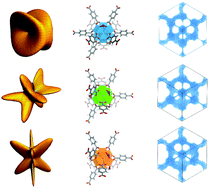
Chem. Commun., 2017,53, 7211-7221
https://doi.org/10.1039/C7CC03306K
3D cellular invasion platforms: how do paper-based cultures stack up?
This feature compares the merits of different 3D invasion assays. We highlight paper-based cultures as an emerging platform that is readily accessible, modular in design, and capable of quantifying invasion in tissue-like structures.
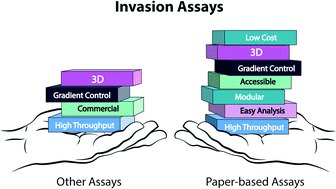
Chem. Commun., 2017,53, 7194-7210
https://doi.org/10.1039/C7CC02357J
Towards seamlessly-integrated textile electronics: methods to coat fabrics and fibers with conducting polymers for electronic applications
Traditional textile materials can be transformed into functional electronic components upon being dyed or coated with films of intrinsically conducting polymers, such as poly(aniline), poly(pyrrole) and poly(3,4-ethylenedioxythiophene).
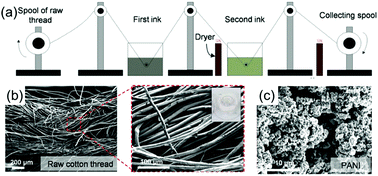
Chem. Commun., 2017,53, 7182-7193
https://doi.org/10.1039/C7CC02592K
Galvanic replacement reaction: recent developments for engineering metal nanostructures towards catalytic applications
Recent developments to achieve further physicochemical control in metallic nanomaterials by galvanic replacement are discussed towards applications in catalysis.
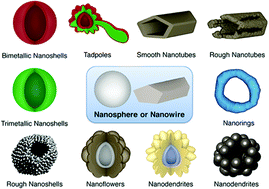
Chem. Commun., 2017,53, 7135-7148
https://doi.org/10.1039/C7CC02352A
Exploiting the unusual effects of fluorine in methodology
Reactions of fluorinated substrates proceed with distinct patterns relative to non-fluorinated substrates.
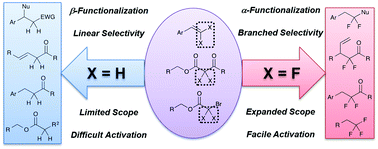
Chem. Commun., 2017,53, 7168-7181
https://doi.org/10.1039/C7CC02341C
Elucidating drug targets and mechanisms of action by genetic screens in mammalian cells
Genome-wide CRISPR interference (CRISPRi) screens in mammalian cells enable drug target identification and uncover genes controlling drug response.
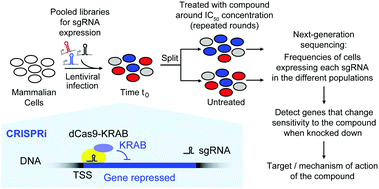
Chem. Commun., 2017,53, 7162-7167
https://doi.org/10.1039/C7CC02349A
Element strategy of oxygen evolution electrocatalysis based on in situ spectroelectrochemistry
The difference between iridium oxide and less active 3d-metal oxygen evolution catalysts is discussed from the efficiency of charge accumulation.
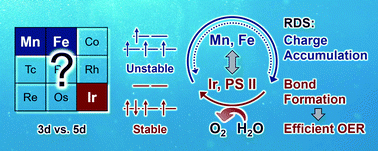
Chem. Commun., 2017,53, 7149-7161
https://doi.org/10.1039/C7CC02204B
Bromide-assisted catalytic oxidation of lead(II) solids by chlorine in drinking water distribution systems
This study investigated the effect of bromide on the oxidation of three lead(II) solids by chlorine – a redox process critical to the control of lead release in drinking water distribution systems.
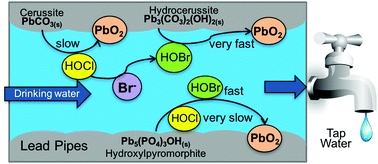
Chem. Commun., 2017,53, 8695-8698
https://doi.org/10.1039/C7CC02533E
A comparative study of magnetization dynamics in dinuclear dysprosium complexes featuring bridging chloride or trifluoromethanesulfonate ligands
The rigidity of the ligand PyCp22− allows for facile access to Dy3+ complexes that exhibit improved dynamic magnetic properties.

Chem. Commun., 2017,53, 8419-8422
https://doi.org/10.1039/C7CC02457F
A thermodynamic and kinetic analysis of solvent-enhanced selectivity in monophasic and biphasic reactor systems
This work shows that selectivity control in biomass systems is governed by reactant solvation in both monophasic and biphasic systems.

Chem. Commun., 2017,53, 8148-8151
https://doi.org/10.1039/C7CC03164E
Membraneless electrolyzers for the simultaneous production of acid and base
This study demonstrates the ability to use membraneless flow-cell electrolyzers to simultaneously produce acids and bases from neutral brine solutions.
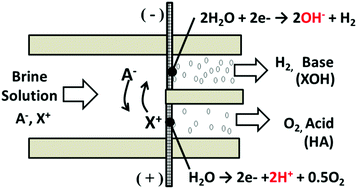
Chem. Commun., 2017,53, 8006-8009
https://doi.org/10.1039/C7CC02361H
CO2 reduction or HCO2− oxidation? Solvent-dependent thermochemistry of a nickel hydride complex
The hydricity (ΔGH−) of a newly synthesized nickel hydride was experimentally determined in acetonitrile (50.6 kcal mol−1), dimethyl sulfoxide (47.1 kcal mol−1), and water (22.8 kcal mol−1).

Chem. Commun., 2017,53, 7405-7408
https://doi.org/10.1039/C7CC02511D
Nanoscale spectroscopic and mechanical characterization of individual aerosol particles using peak force infrared microscopy
Individual fine particulate matter (PM2.5) particles are revealed with mechanical mapping and infrared imaging at 10 nm spatial resolution.
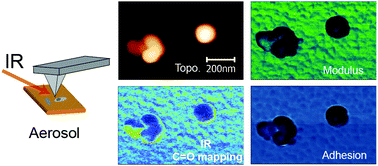
Chem. Commun., 2017,53, 7397-7400
https://doi.org/10.1039/C7CC02301D
Micro- and nano-patterned conductive graphene–PEG hybrid scaffolds for cardiac tissue engineering
Topographic and graphene-functionalized culture substrates were fabricated to regulate cardiac structure and function through manipulation of micro- and nano-scale mechanical and electroconductive cues.
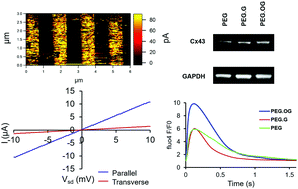
Chem. Commun., 2017,53, 7412-7415
https://doi.org/10.1039/C7CC01988B
Dissecting mechanism of coupled folding and binding of an intrinsically disordered protein by chemical synthesis of conformationally constrained analogues
Non-canonical α-methyl amino acids were incorporated at various sites in the sequence of intrinsically disordered activation domain from the p160 transcriptional co-activator (ACTR) to facilitate the formation of α-helical structures.
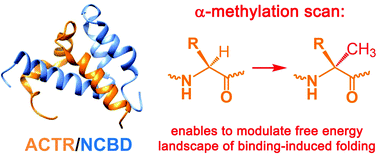
Chem. Commun., 2017,53, 7369-7372
https://doi.org/10.1039/C7CC02276J
Incorporation of native antibodies and Fc-fusion proteins on DNA nanostructures via a modular conjugation strategy
A photocrosslinkable protein G adapter was used to site-specifically conjugate complex native proteins to oligonucleotides, allowing for efficient incorporation on DNA origami nanostructures.
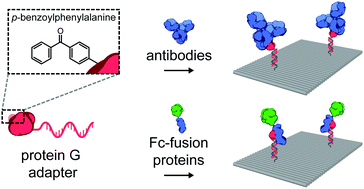
Chem. Commun., 2017,53, 7393-7396
https://doi.org/10.1039/C7CC04178K
Regioselective addition of C(sp3)–H bonds of alkyl pyridines to olefins catalysed by cationic zirconium complexes
The first group 4 metal catalysts are developed to catalyse C(sp3)–H addition of alkyl pyridines to olefins. Ligand-controlled regioselectivity was observed and verified.
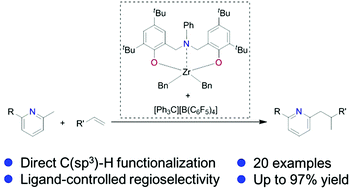
Chem. Commun., 2017,53, 7401-7404
https://doi.org/10.1039/C7CC03263C
Ligand induced structural isomerism in phosphine coordinated gold clusters revealed by ion mobility mass spectrometry
Structural isomerism in ligated gold clusters is revealed using electrospray ionization ion mobility spectrometry mass spectrometry.
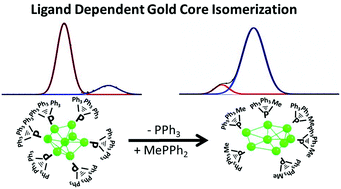
Chem. Commun., 2017,53, 7389-7392
https://doi.org/10.1039/C7CC02251D
Effect of pH on chitosan hydrogel polymer network structure
With our newly developed model, we have revealed the molecular mechanism of chitosan hydrogel self-assembly by exploring its pH-dependent crosslinking pattern.
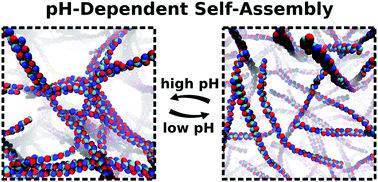
Chem. Commun., 2017,53, 7373-7376
https://doi.org/10.1039/C7CC01826F
Chemoselective ratiometric imaging of protein S-sulfenylation
Here we report a ratiometric fluorescent probe for chemoselective conjugation to sulfenic acids in living cells.
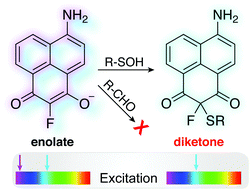
Chem. Commun., 2017,53, 7385-7388
https://doi.org/10.1039/C7CC02285A
cis-Decalin oxidation as a stereochemical probe of in-MOF versus on-MOF catalysis
Development of catalyst-controlled C–H hydroxylation could provide direct access to valuable synthetic targets, such as primary metabolites.
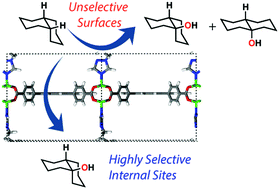
Chem. Commun., 2017,53, 7377-7380
https://doi.org/10.1039/C7CC02570J
Faradaic oxygen evolution from SrTiO3 under nano- and femto-second pulsed light excitation
Measured O2 concentration under 266 nm, 500 Hz, 150 fs (open red circles) and 30 ns (open blue triangles) pulsed laser excitation. The black lines indicate the theoretical amount of O2 product at 100% Faradaic efficiency.
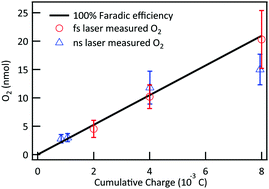
Chem. Commun., 2017,53, 7254-7257
https://doi.org/10.1039/C7CC03061D
Long alkyl side-chains impede exciton interaction in organic light harvesting crystals
First report on the effect of side-chain induced perturbations on exciton interactions in an organic light harvesting crystal.
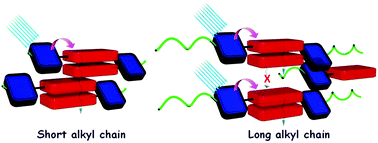
Chem. Commun., 2017,53, 7409-7411
https://doi.org/10.1039/C7CC02322G
Molecular “topological insulators”: a case study of electron transfer in the bis(methylene) adamantyl carbocation
A topological or geometric phase blockade can be introduced in molecular electron transfer processes if a conical intersection occurs between two charge configurations.
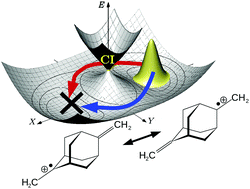
Chem. Commun., 2017,53, 7365-7368
https://doi.org/10.1039/C7CC02275A
Reconfigurable opto-thermoelectric printing of colloidal particles
We have developed a new optical technique – opto-thermoelectric printing – to print colloidal particles with reconfigurable patterns on substrates via light-controlled thermoelectric fields.
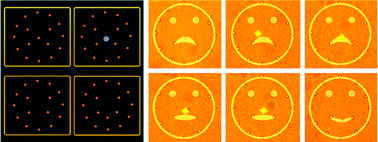
Chem. Commun., 2017,53, 7357-7360
https://doi.org/10.1039/C7CC03530F
Live-cell monochromatic dual-label sub-diffraction microscopy by mt-pcSOFI
We present mt-pcSOFI, live-cell monochromatic sub-diffraction imaging and illustrate the method with existing RSFPs and the newly developed ffDronpa-F.
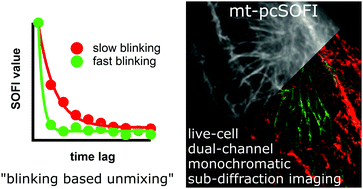
Chem. Commun., 2017,53, 7242-7245
https://doi.org/10.1039/C7CC02344H
Highly efficient complexation of sanguinarine alkaloid by carboxylatopillar[6]arene: pKa shift, increased solubility and enhanced antibacterial activity
Efficient complexation of sanguinarine by carboxylatopillar[6]arene. The pKa shift, increased solubility, and enhanced antibacterial activity are described.
![Graphical abstract: Highly efficient complexation of sanguinarine alkaloid by carboxylatopillar[6]arene: pKa shift, increased solubility and enhanced antibacterial activity](/en/Image/Get?imageInfo.ImageType=GA&imageInfo.ImageIdentifier.ManuscriptID=C7CC02799K&imageInfo.ImageIdentifier.Year=2017)
Chem. Commun., 2017,53, 7381-7384
https://doi.org/10.1039/C7CC02799K
Gram-scale free radical polymerization of an azaborine vinyl monomer
The gram-scale polymerization of a novel azaborine vinyl monomer is reported.
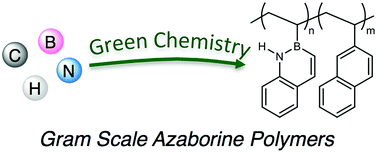
Chem. Commun., 2017,53, 7262-7265
https://doi.org/10.1039/C7CC02300F
Mesoporous titanium and niobium nitrides as conductive and stable electrocatalyst supports in acid environments
Mesoporous TiN and NbN synthesized using a block copolymer self-assembly are evaluated for catalyst support applications in acid environments.

Chem. Commun., 2017,53, 7250-7253
https://doi.org/10.1039/C7CC03232C
A metal–organic framework as a flask: photophysics of confined chromophores with a benzylidene imidazolinone core
Photophysics and dynamics of chromophores with a benzylidene imidazolinone core, responsible for emission of green fluorescent protein variants, were studied as a function of host topology by three approaches.
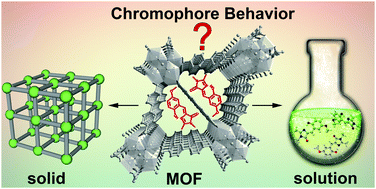
Chem. Commun., 2017,53, 7361-7364
https://doi.org/10.1039/C7CC02253K
Laser post-ionisation combined with a high resolving power orbitrap mass spectrometer for enhanced MALDI-MS imaging of lipids
Coupling laser post-ionisation with a high resolving power MALDI Orbitrap mass spectrometer has realised an up to ∼100-fold increase in the sensitivity and enhanced the chemical coverage for MALDI-MS imaging of lipids relative to conventional MALDI.
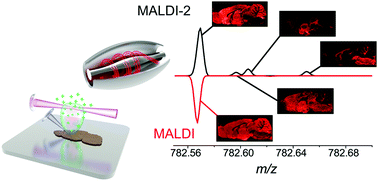
Chem. Commun., 2017,53, 7246-7249
https://doi.org/10.1039/C7CC02325A
5-Benzylidene-4-oxazolidinones potently inhibit biofilm formation in Methicillin-resistant Staphylococcus aureus
Investigation into the biological function of 5-benzylidene-4-oxazolidinones revealed dose-dependent inhibition of biofilm formation in Methicillin-resistant S. aureus (MRSA).

Chem. Commun., 2017,53, 7353-7356
https://doi.org/10.1039/C7CC03626D
Cell-sized mechanosensitive and biosensing compartment programmed with DNA
The bottom-up construction of cell-sized membrane active compartments programmed with DNA is achieved by constructing mechanosensitive liposomes with biosensing capability using cell-free expression.
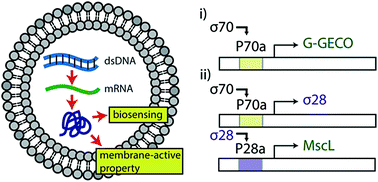
Chem. Commun., 2017,53, 7349-7352
https://doi.org/10.1039/C7CC03455E
A pulse electrosynthesized nanoporous nickel oxyhydroxide-borate thin film in electro- and photoelectro-reforming of methanol for selective production of formate
A highly efficient and robust nanoporous NiOOH-borate thin film for the selective production of formate via electrochemical and photoelectrochemical methanol reforming is reported.
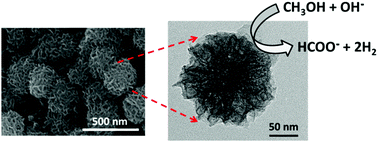
Chem. Commun., 2017,53, 7345-7348
https://doi.org/10.1039/C7CC02945D
Rapid synthesis of bicyclic lactones via palladium-catalyzed aminocarbonylative lactonizations
Novel palladium-catalyzed aminocarbonylative lactonizations have been developed to synthesize bicyclic lactones with antibacterial and antifungal activities.
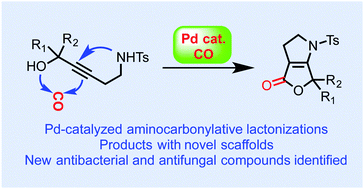
Chem. Commun., 2017,53, 7238-7241
https://doi.org/10.1039/C7CC02494K
Hierarchical self-supported ZnAlEu LDH nanotubes hosting luminescent CdTe quantum dots
Self-assembled, cylindrical LDH nanotubes (∅ 20nm) host large species such as nanodots or bulky substrates in their central cavity, leaving the interlayer space available for anionic sensitizer molecules.
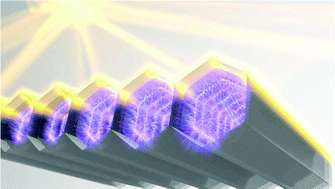
Chem. Commun., 2017,53, 7341-7344
https://doi.org/10.1039/C7CC02097J
Imaging localized electric fields with nanometer precision through tip-enhanced Raman scattering
Tip-enhanced Raman scattering may be used to image various aspects of plasmon-enhanced local electric fields with extremely high spatial resolution.
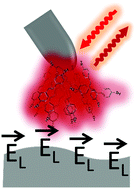
Chem. Commun., 2017,53, 7310-7313
https://doi.org/10.1039/C7CC02593A
Chemoenzymatic synthesis of polypeptides containing the unnatural amino acid 2-aminoisobutyric acid
Polypeptides containing 2-aminoisobutiryc acid (Aib) as an unnatural amino acid were synthesized via chemoenzymatic polymerization of the tripeptide ethyl ester AlaAibAla-OEt.

Chem. Commun., 2017,53, 7318-7321
https://doi.org/10.1039/C7CC03095A
Hydroboration of alkynes and nitriles using an α-diimine cobalt hydride catalyst
The κ4-diimine cobalt hydride compound, (Ph2PPrDI)CoH, has been found to catalyze E-selective alkyne hydroboration and the dihydroboration of nitriles.
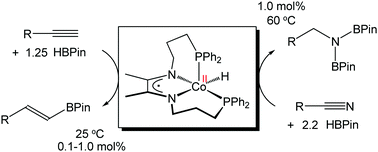
Chem. Commun., 2017,53, 7333-7336
https://doi.org/10.1039/C7CC02281F
Pinpointing disulfide connectivities in cysteine-rich proteins
The sequence and order of disulfide bond formation in cysteine-rich proteins, and the resulting conformational changes, are assessed via a thermodynamic perturbation protocol.
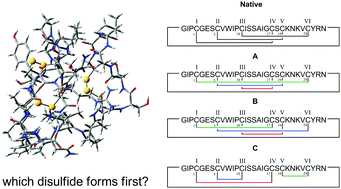
Chem. Commun., 2017,53, 7337-7340
https://doi.org/10.1039/C7CC02333B
Ferromagnetic coupling in a chloride-bridged erbium single-molecule magnet
We present the first ferromagnetically-coupled Er3+ complex with linked, high-anisotropy Er–COT (COT2− = cyclooctatetraene dianion) subunits.
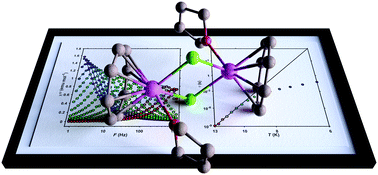
Chem. Commun., 2017,53, 7322-7324
https://doi.org/10.1039/C7CC02356A
Isolated, well-defined organovanadium(III) on silica: single-site catalyst for hydrogenation of alkenes and alkynes
Well-defined, isolated, single-site organovanadium(III) catalyst on SiO2 for unprecedented liquid- and gas-phase hydrogenation of alkenes and alkynes under mild conditions.
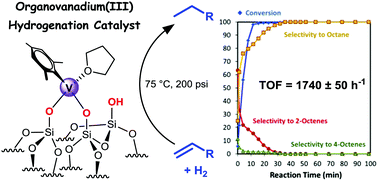
Chem. Commun., 2017,53, 7325-7328
https://doi.org/10.1039/C7CC01876B
Hierarchical bicontinuous structure of redox-active organic composites and their enhanced electrochemical properties
The hierarchical bicontinuous structure of redox-active organic composites of crystalline quinone derivatives and conductive polymers was generated through simultaneous etching of the crystal and polymerization of the monomer.
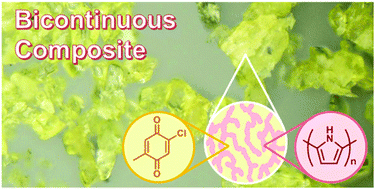
Chem. Commun., 2017,53, 7329-7332
https://doi.org/10.1039/C7CC02203D
Capturing local structure modulations of photoexcited BiVO4 by ultrafast transient XAFS
Femto- and picosecond transient XAFS revealed the photoexcitation dynamics of BiVO4.
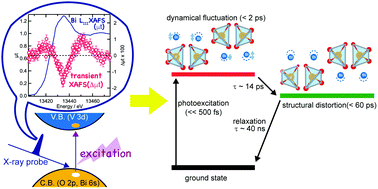
Chem. Commun., 2017,53, 7314-7317
https://doi.org/10.1039/C7CC02201H
H2 evolution by a cobalt selenolate electrocatalyst and related mechanistic studies
[Co(bds)2][nBu4N] (where bds = 1,2-benzenediselenolate) was identified as an electrocatalyst for H2 evolution. Mechanistic studies indicate that with acid a protonated oligomeric {[Co(bds)2(H)x]x−1}m is formed, which was found to reenter the catalytic cycle and generate H2.
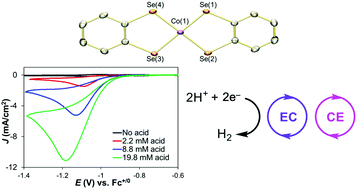
Chem. Commun., 2017,53, 7306-7309
https://doi.org/10.1039/C7CC02473H
Donor ligands based on tricoordinate boron formed by B–H-activation of bis(phosphine)boronium salts
The (R3P)2HB-moiety in a palladium(II) pincer complex is demonstrated to be a L-type ligand and compared with other bonding types.
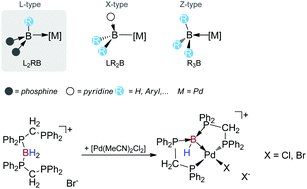
Chem. Commun., 2017,53, 7230-7233
https://doi.org/10.1039/C7CC02335A
Carbocatalytic reductive coupling reactions via electron transfer from graphene to aryldiazonium salt
A reductive coupling reaction using two-dimensional nanocarbon, i.e., reduced graphene oxide (rGO), as a carbocatalyst and/or a reaction initiator was developed.
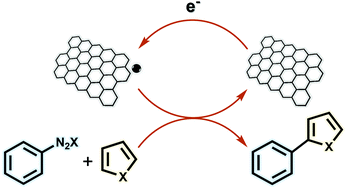
Chem. Commun., 2017,53, 7226-7229
https://doi.org/10.1039/C7CC02337E
Photopatterning of fluorescent host–guest carriers through pore activation of metal–organic framework single crystals
Encoded fluorescent particles are fabricated through the selective uptake of dyes in photopatterned metal–organic framework single crystals.
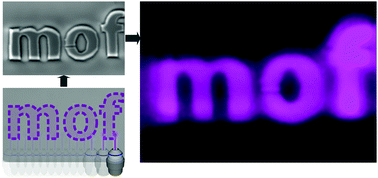
Chem. Commun., 2017,53, 7222-7225
https://doi.org/10.1039/C7CC02709E
An autocatalytic cycle in autoxidation of triethylborane
An autocatalytic cycle was found in the mechanism of autoxidation of triethylborane using density functional theory calculations, and studied in detail with kinetic simulations.
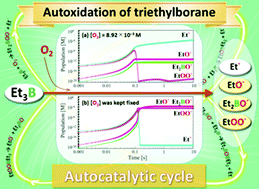
Chem. Commun., 2017,53, 7302-7305
https://doi.org/10.1039/C7CC02541F
Studying structure and dynamics of self-assembled peptide nanostructures using fluorescence and super resolution microscopy
Understanding the formation and properties of self-assembled peptide nanostructures is the basis for the design of new architectures for various applications.
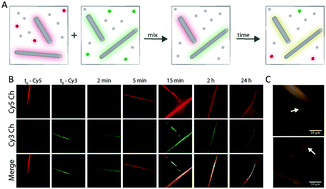
Chem. Commun., 2017,53, 7294-7297
https://doi.org/10.1039/C7CC02176C
Selective adsorption of carbohydrates and glycoproteins via molecularly imprinted hydrogels: application to visible detection by a boronic acid monomer
Molecularly imprinted PEG-based hydrogels were prepared for carbohydrates and glycoproteins. Visible detection of fructose was achieved by the gels.

Chem. Commun., 2017,53, 7290-7293
https://doi.org/10.1039/C7CC02310C
Temperature dependency of aqueous biphasic systems: an alternative approach for exploring the differences between Coulombic-dominated salts and ionic liquids
An alternative way to distinguish ionic liquids and Coulombic-dominated salts based on the temperature dependency of aqueous biphasic systems.
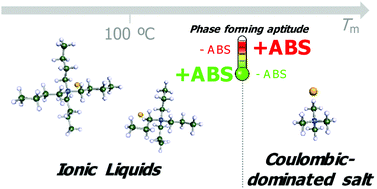
Chem. Commun., 2017,53, 7298-7301
https://doi.org/10.1039/C7CC02294H
Distinguishing between homogeneous and heterogeneous hydrogen-evolution catalysis with molecular cobalt complexes
An electrochemical quartz crystal microbalance can detect formation of heterogeneous material from molecular precursors, and thus provides rapid access to information on catalyst stability.
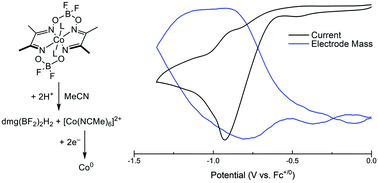
Chem. Commun., 2017,53, 7286-7289
https://doi.org/10.1039/C7CC02188G
A macrocyclic ‘Co0’ complex: the relevance of ligand non-innocence to reactivity
A formally ‘Co0’ compound, containing the redox-active macrocyclic Mabiq ligand, was isolated and characterized. Ligand redox non-innocence in this system has important ramifications for reactivity.
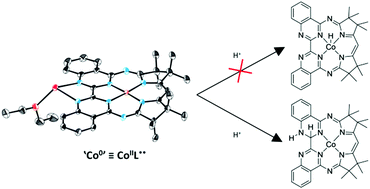
Chem. Commun., 2017,53, 7282-7285
https://doi.org/10.1039/C7CC02239E
Photoisomerisation and light-induced morphological switching of a polyoxometalate–azobenzene hybrid
The functionalization of a spherical Keplerate-type polyoxometalate {Mo72V30} with a cationic azobenzene surfactant has been achieved through ionic self-assembly.
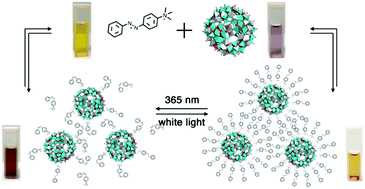
Chem. Commun., 2017,53, 7278-7281
https://doi.org/10.1039/C7CC01805C
Reversible dinitrogen binding to [Cp′Fe(NHC)] associated with an N2-induced spin state change
Reversible N2 coordination to [Cp′Fe(IiPr2Me2)] induces a spin-state change.
![Graphical abstract: Reversible dinitrogen binding to [Cp′Fe(NHC)] associated with an N2-induced spin state change](/en/Image/Get?imageInfo.ImageType=GA&imageInfo.ImageIdentifier.ManuscriptID=C7CC01535F&imageInfo.ImageIdentifier.Year=2017)
Chem. Commun., 2017,53, 7274-7277
https://doi.org/10.1039/C7CC01535F
Chemoproteomics-enabled covalent ligand screen reveals a cysteine hotspot in reticulon 4 that impairs ER morphology and cancer pathogenicity
Chemoproteomics-enabled covalent ligand discovery reveals a covalent ligand targeting RTN4 that alters ER morphology and impairs cancer pathogenicity.
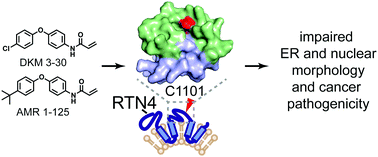
Chem. Commun., 2017,53, 7234-7237
https://doi.org/10.1039/C7CC01480E
Exhaustive Suzuki–Miyaura reactions of polyhalogenated heteroarenes with alkyl boronic pinacol esters
A novel Suzuki–Miyaura protocol is described that enables the exhaustive alkylation of polychlorinated pyridines.

Chem. Commun., 2017,53, 7270-7273
https://doi.org/10.1039/C7CC00997F
Ultrahigh volatile iodine uptake by hollow microspheres formed from a heteropore covalent organic framework
A COF with hierarchical porosity has been constructed. It exists as hollow microspheres and exhibits an extremely high volatile iodine uptake (up to 481 wt%) by encapsulating iodine in the inner cavities and porous shells of the microspheres.

Chem. Commun., 2017,53, 7266-7269
https://doi.org/10.1039/C7CC01045A
High molecular weight poly(N-methyl-B-vinylazaborine) – a semi-inorganic B–N polystyrene analogue
We present the synthesis of a B–N analogue of polystyrene, poly(N-methyl-B-vinylazaborine) in high molecular weight (MW = 24.9 kDa).

Chem. Commun., 2017,53, 7258-7261
https://doi.org/10.1039/C6CC08599G
About this collection
Now on its seventh year, this annual special issue showcases research carried out by internationally recognised, up-and-coming scientists in the early stages of their independent careers, and who are making outstanding contributions to their respective fields. New articles will be added to this collection as they are published.